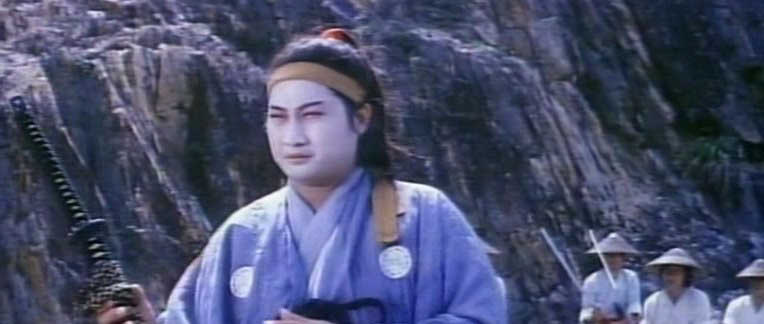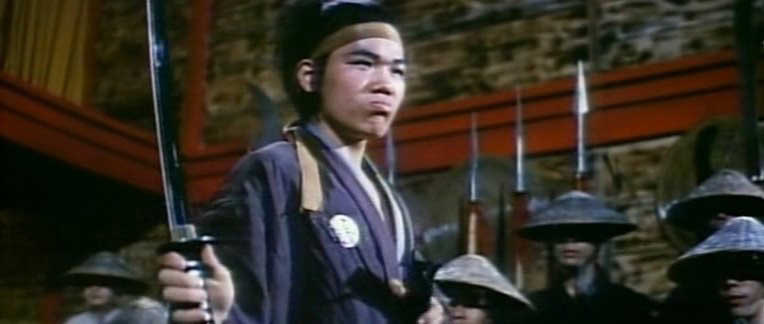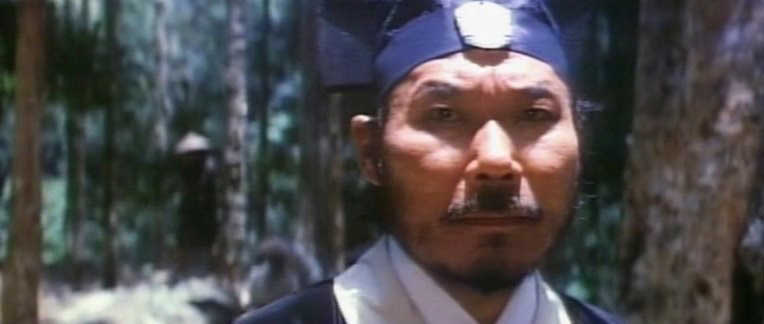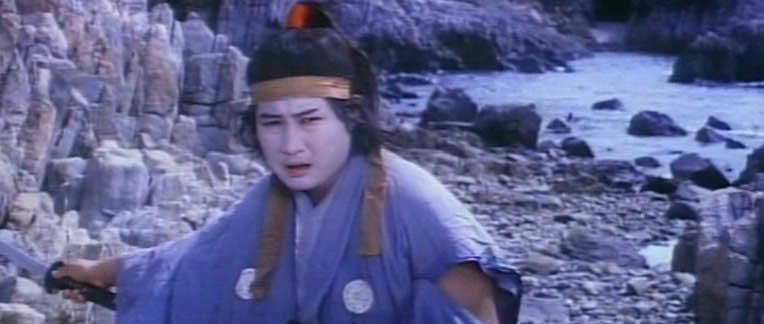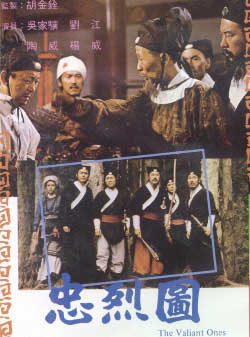

Director: King Hu
Year: 1975
Rating: 7.0
Most Chinese film scholars generally consider
this 1975 production to be King Hu’s last wuxia masterpiece. The brilliant
Raining in the Mountain and Legend of the Mountain are to come four years
later but though they have elements of wuxia in them they are more philosophical
in nature. This was made as part of a two-film deal for Golden Harvest –
the other one being The Fate of Lee Khan (1973) – and though both films share
much of the same cast and ideals they are very different films. Lee Khan
is on a much smaller and more intimate scale – deftly dealing with intrigues
and conspiracies within the confines of an inn for nearly the entire picture,
while The Valiant Ones is more epic in nature, full of action and most of
the film takes place in the open spaces of the Chinese countryside. In both
films though, Hu focuses on the themes of individual heroism and their sacrifice
for a greater cause. As in all of Hu’s films, the composition and cinematography
is stunning – close to picture perfect at times. His wonderful use of close
ups, wide angle, framing and tracking shots always allows the viewer to get
a total sense of what is happening. His editing during the action scenes
is fast, innovative (for the time) and exciting and it pulls you right into
the vortex of the action. He has a great eye for detail and authenticity
and the sets and costumes look terrific.
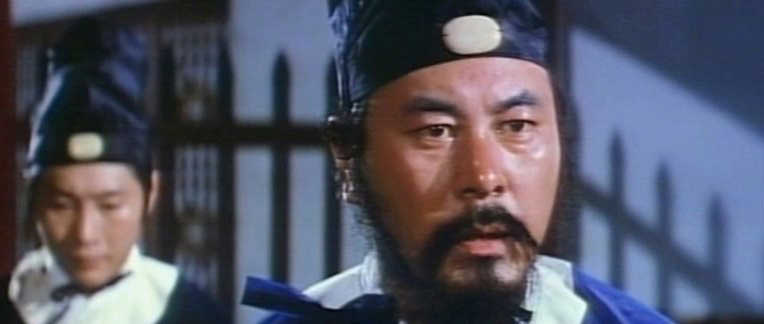
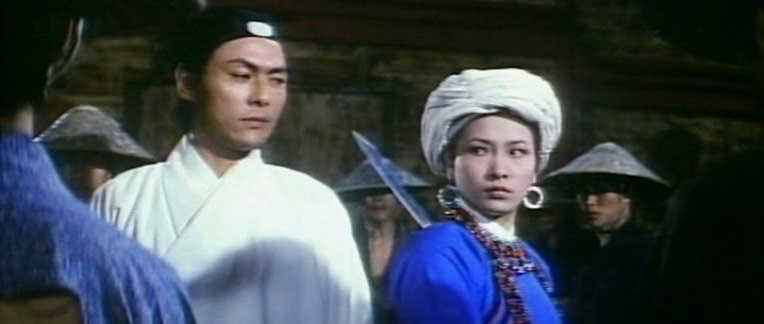
Once the background story is initially set up, The Valiant Ones becomes
nearly a non-stop series of skirmishes and intrigue that Hu uses to explore
his fascination for military strategy and tactics and how by using them correctly
a small force can overcome a much larger one (something that holds great interest
for him in A Touch of Zen as well). Hu utilizes many different variations
and scenarios within this action pieces that keeps the film from becoming
monotonous. The first action set piece is within the closed in space of an
inn – but afterwards Hu moves the camera outside and gives us everything from
one on one fights to two against many to a small group utilizing tactics and
the landscape brilliantly to defeat the large force of the enemy. Initially,
Hu seems to be uninterested in developing the characters and he spends next
to no time giving any information on any of them. There is very little interaction
between them except during the action scenes. But during the course of the
film, the action itself and the manner in which they conduct themselves in
action begins to give hints as to their personalities and by the end they
are – if far from fully realized individuals – characters that you care about.
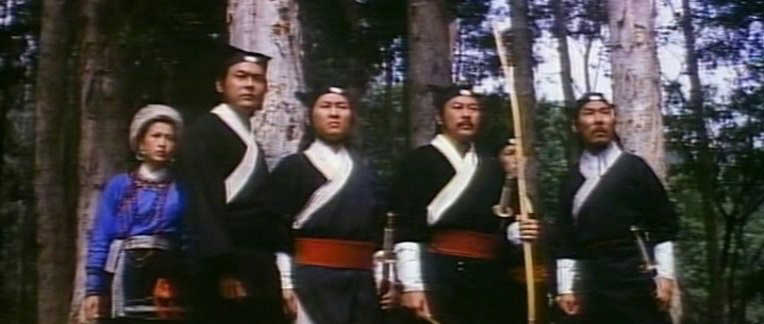
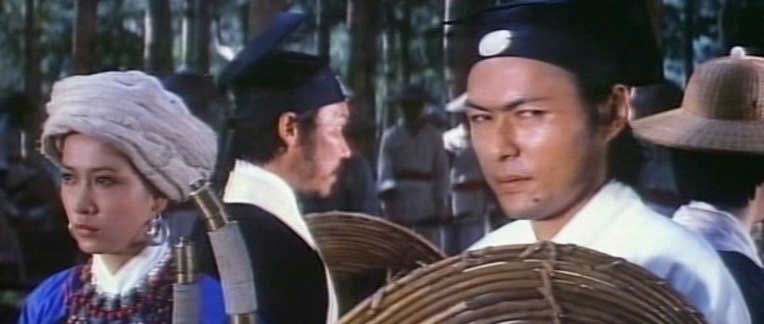
The film takes place in the 16th century during the Ming Dynasty and the Imperial Court is unable to defeat the many Japanese and Chinese pirates that are plaguing the coastline. There is much evidence that men of influence are assisting the pirates and so the court finally turns to the one man whose integrity is irreproachable. This is Yu Dayou (a real life character played by Roy Chiao) and he assembles around him a small group of fighters that he trusts. Lau Kong and Lee Man-tai play his two main subordinates – but he also has the services of a legendary swordsman called The Whirlwind (Pai Ying) and his silent but extremely deadly wife (Hsu Feng). They are an awesome group of fighters and they slowly whittle away at the much larger pirate force by setting ambushes, drawing them out bit by bit and cutting them to pieces. These action pieces play out very well – lots of sword fighting and kung fu – but it is the intelligence that Hu brings to them that makes them particularly enjoyable. In one of the earlier fights – Chiao literally uses a Go board to track the enemy movements and uses it to configure a response to outmaneuver them.
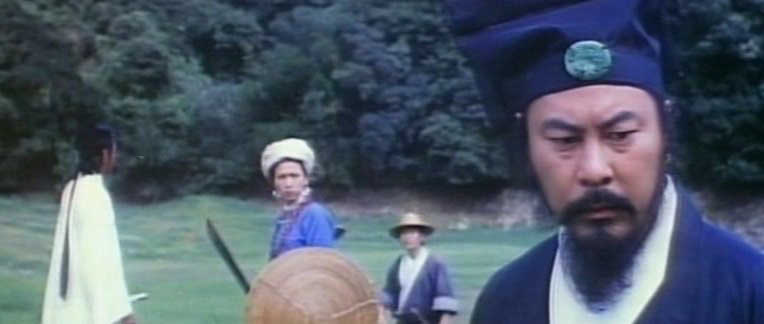
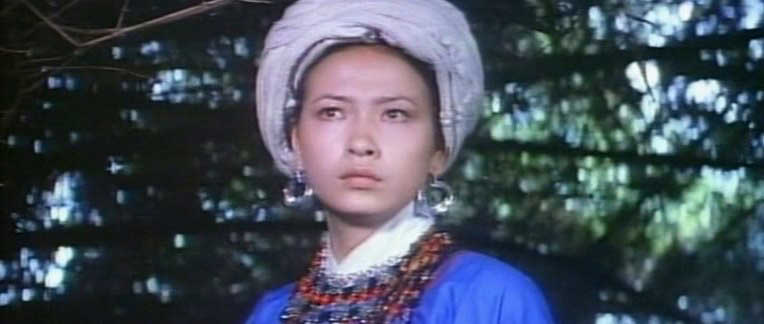
In one of the most enjoyable segments of the
film, Pai Ying and Hsu Feng pretend to desert to the enemy and are taken
to their hideaway. Before the pirates accept them, Han Ying Chieh – one of
the head Chinese pirates - has them tested for their fighting abilities.
First up is a very young Yuen Biao, then Yuen Wah and three others, then
Simon Yuen in an archery contest and it ends with a challenge from Mars and
then Yuen Miu. Sammo as a Japanese pirate looks on. It is a nice showcase
for the skills of all the actors involved – and acts almost as a quiet respite
before the final battle. Though not at the time, the actors in this room
are a Hall of Fame Hong Kong line-up. The final clash between all the remaining
pirates and Chiao’s men (and some well-placed dynamite) is bloody and ferocious
– and a number of the good guys are killed off. Hu saves the best for last
though – as Pai Ying and the head pirate Hakatatsu (Sammo Hung in fearsome
white face paint) go one on one in an incredibly tense duel of thrusting
swords, spinning somersaults and deadly Ninja stars. Hu ends the film in
a classical and powerful freeze frame as the camera slowly pulls back to
show what has been wrought.
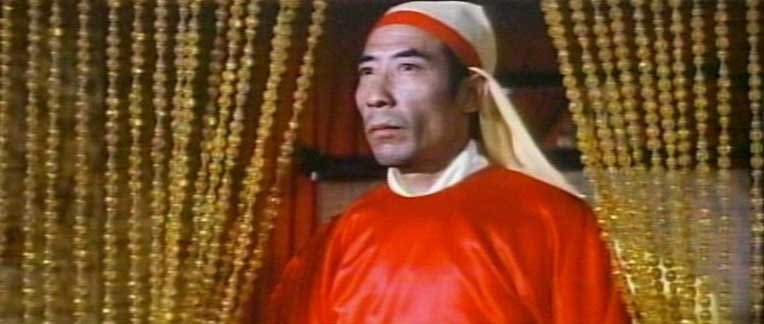
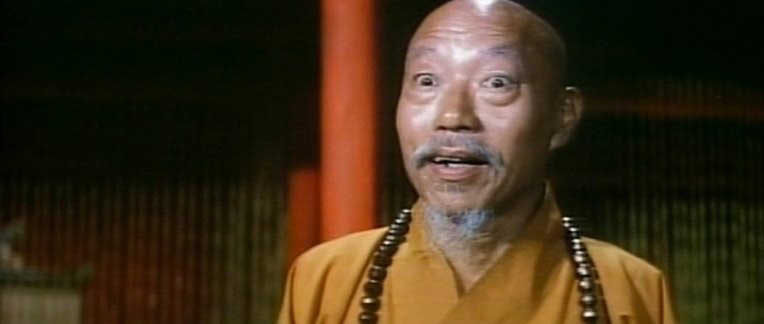
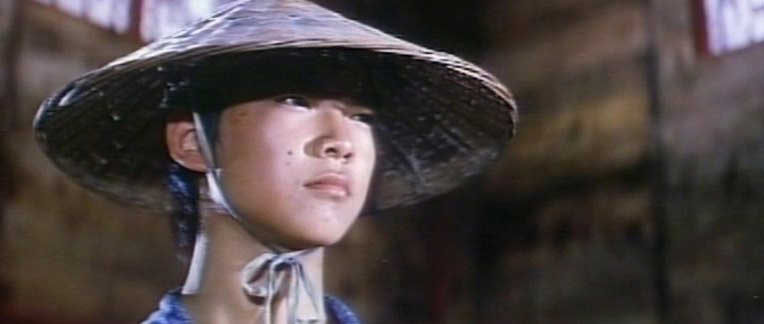
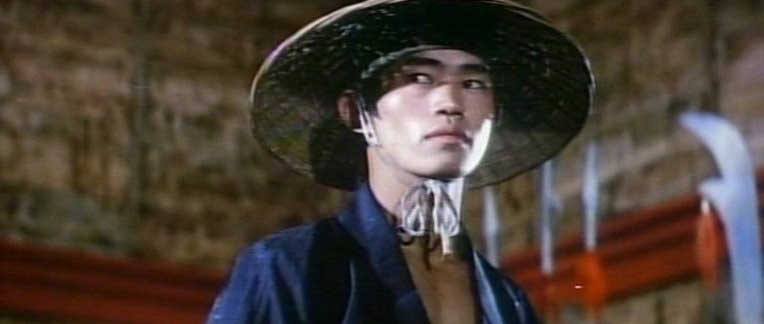
This film doesn’t have the powerful and charismatic central character of
many of Hu’s earlier films – Golden Swallow in Come Drink with Me or Miss
Yang in A Touch of Zen - it is more of an ensemble piece - and this lack of
a main hero hurts the film to some degree. Still, I found this to be highly
engrossing – filmmaking at its finest in many ways - and it has a cumulative
effect on you. The action, which is choreographed by Sammo, shows a marked
improvement over that in The Fate of Lee Khan, which he did as well. As the
film works its way through all the different action pieces, I became much
more involved with the story and the characters. It was very hard to find
this film in a decent format for a long time and so its reputation isn’t what
some of Hu’s other films have but it is a tremendous film.
